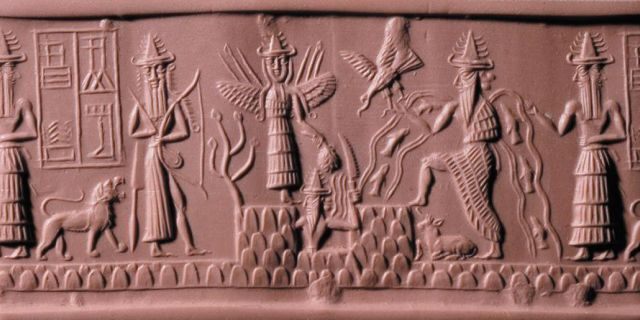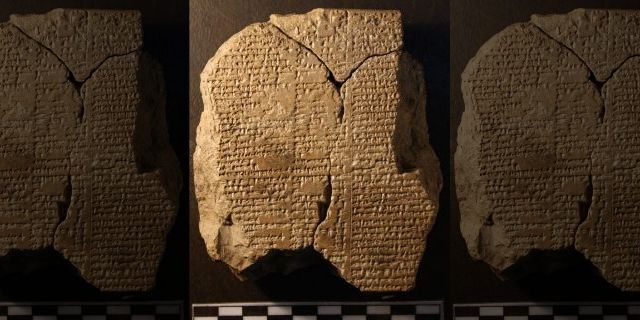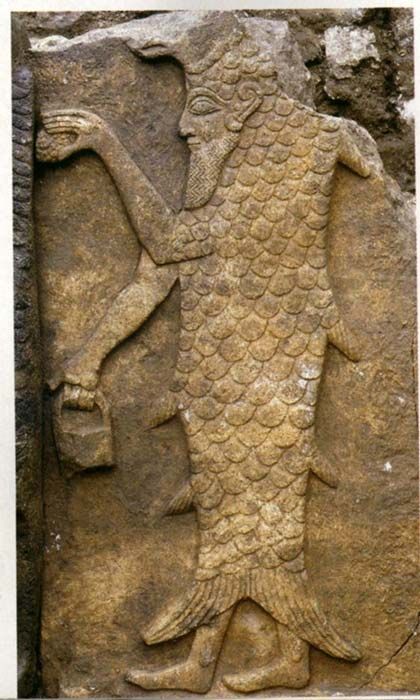- 7,689

- Michigan
- Rallywgn81
Bill Murray....Well, if there’s something strange in your neighbourhood, who else you gonna call?
Bill Murray....Well, if there’s something strange in your neighbourhood, who else you gonna call?
In the Amazon the indigenous people are linked by DNA to Australian aborigines.

Under the canopy of jungle are many geometrical structures with astronomical alignments to be found.
There are legends of lost, advanced civilizations and buried treasure.

Nope. Any particular "advanced civilization" in Amazonia has yet to be properly found and studied. It's not as nearly as easy as studying the (remaining) ancient earthworks in North America. One odd thing though, the shape, size, particular "henge" (ditch inside of wall, not outside as in a fortification) construction and celestial orientation of some of the Amazonian earthworks has a roughly similar appearance to the earthworks well studied in parts of the upper Mississippi River network of tributaries. But again, the Amazon awaits better study. Many of these new finds are from the air or by amateurs.Is there a particular "advanced civilisation" of interest? I know it's lazy but I'm not up to watching one of those videos
Nope. Any particular "advanced civilization" in Amazonia has yet to be properly found and studied. It's not as nearly as easy as studying the (remaining) ancient earthworks in North America. One odd thing though, the shape, size, particular "henge" (ditch inside of wall, not outside as in a fortification) construction and celestial orientation of some of the Amazonian earthworks has a roughly similar appearance to the earthworks well studied in parts of the upper Mississippi River network of tributaries. But again, the Amazon awaits better study. Many of these new finds are from the air or by amateurs.
LiDAR has allowed researchers and archaeologists to find ruins in the rainforests that they have walked right over.
A scholar at the University of Cambridge in the U.K. has suggested that the "earliest ever example of fake news" exists in a 3,000-year-old Babylonian tablet that describes the story of Noah and the Ark, widely believed to be the inspiration for the Biblical story.
Researcher Martin Worthington notes that nine lines in the clay tablets that tell the story of the Gilgamesh Flood can be understood in several different ways, thanks to deceitful language from the Babylonian god called Ea, whom he believes was motivated by self-interest.
“Ea tricks humanity by spreading fake news," Worthington said in a statement. "He tells the Babylonian Noah, known as Uta–napishti, to promise his people that food will rain from the sky if they help him build the ark. What the people don’t realize is that Ea’s nine-line message is a trick: it is a sequence of sounds that can be understood in radically different ways, like English ‘ice cream’ and ‘I scream’."

“While Ea’s message seems to promise a rain of food, its hidden meaning warns of the Flood," Worthington added. "Once the ark is built, Uta–napishti and his family clamber aboard and survive with a menagerie of animals. Everyone else drowns. With this early episode, set in mythological time, the manipulation of information and language has begun. It may be the earliest ever example of fake news.”
According to the statement, Worthington is an assyriologist who "specializes in Babylonian, Assyrian and Sumerian grammar, literature and medicine."
The two lines in question from the flood story in Babylonian are:
ina šēr(-)kukkī
ina lilâti ušaznanakkunūši šamūt kibāti
A positive-sounding interpretation:
At dawn there will be kukku-cakes,
in the evening he will rain down upon you a shower of wheat.
A negative interpretation from the poem:
By means of incantations,
by means of wind-demons, he will rain down upon you rain as thick as (grains of) wheat.
Another negative interpretation:
At dawn, he will rain down upon you darkness,
(then) in (this) pre-nocturnal twilight he will rain down upon you rain as thick as (grains of) wheat.
The ancient epic poem of Gilgamesh is widely believed to be among the earliest known works of literature and the second oldest religious text. The Gilgamesh Flood story is known from clay tablets that date back approximately 3,000 years, including the Flood Tablet, discovered by Assyriologist George Smith in 1872. It is currently located at the British Museum.

No audio, just close-ups of ancient drill holes and tool marks for about 8 minutes.
What's the mystery supposed to be behind this?

Very simply: Once there was a thriving technology that left such artifacts, then it was lost for a time - millennia - and now we do it again but with Industrial Age tools. What happened in the mean time? Possible answers in general might include the Bronze Age collapse, which raises the questions of climate change, wars and different/evolving belief systems. In prehistoric North America, having little to do with the Bronze Age, there have been periods of extensive mound building, but interrupted by other very long periods where no mounds at all were constructed. In most all cases, the people were more or less the same, but unknown changes in climate, economy and belief systems are thought to be possible explanations.What's the mystery supposed to be behind this?
So nothing specific about the video, just in general?Very simply: Once there was a thriving technology that left such artifacts, then it was lost for a time - millennia - and now we do it again but with Industrial Age tools. What happened in the mean time? Possible answers in general might include the Bronze Age collapse, which raises the questions of climate change, wars and different/evolving belief systems. In prehistoric North America, having little to do with the Bronze Age, there have been periods of extensive mound building, but interrupted by other very long periods where no mounds at all were constructed. In most all cases, the people were more or less the same, but unknown changes in climate, economy and belief systems are thought to be possible explanations.
The only specific thing about the video is that it shows in rather beautiful close-up video quality some of the drilled holes and sawn surfaces with tool marks easily seen. It didn't say so specifically when the work was done, but I assume it all predates the Middle Kingdom in Egypt.So nothing specific about the video, just in general?
Some few parts of it are emerging as archeological truth, such as the long distance ocean voyages of Polynesian civilizations. I think continued research is justified. But Antarctic research is obviously very challenging, particular in an era of economic recession.

The same general image is found repeatedly throughout this ancient culture.
Likely also the origin of Poseidon!Probably because many of the ancient civilizations borrowed from the civilizations before it. I assume that's Uanna, which the Greeks borrowed and renamed Oannes if I remember my ancient history classes correctly.
Viper TV documentary Mysterious Monuments 3+ hours

Rococo architecture not from18th century France, but from bronze age South America.
